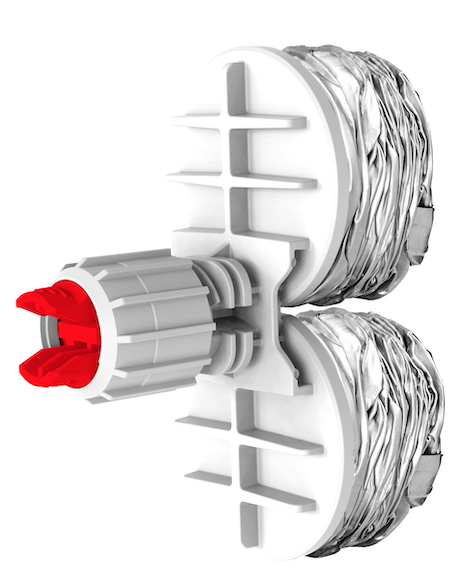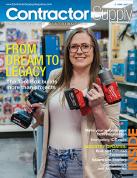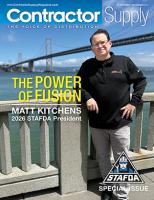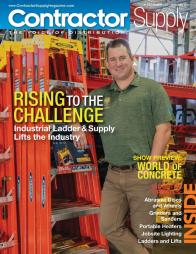Exclusive: Environmental Perspectives on Cartridges for Adhesives and Sealants
Sulzer Mixpac’s ecopaCC reduces waste and costs for customers.
By Rob Lindsey, Applications Engineer at Sulzer Mixpac
 All along the product chain, companies are becoming more environmentally-conscious in response to customer demands and regulatory requirements. Suppliers must work within existing material availability and costs to find innovative ways to reduce the use of non-sustainable materials and limit waste.
All along the product chain, companies are becoming more environmentally-conscious in response to customer demands and regulatory requirements. Suppliers must work within existing material availability and costs to find innovative ways to reduce the use of non-sustainable materials and limit waste.
Within the adhesives and sealant industry, Sulzer Mixpac has met this need by cutting down on plastic waste while retaining product integrity with its ecopaCC collapsible cartridge system.
Reduce, Reuse, Recycle
Customers are also interested in reducing their own waste streams and carbon footprints, so they often look to suppliers for sustainable products or lower plastic waste volumes. This trend has been amplified by the recent regulations in place in areas like Western Europe, California, and Japan, which are requiring companies to drastically reduce single-use packaging and product waste.
This has become a pressing issue, especially for companies using plastic cartridge-based adhesives and sealants in high volumes, like with construction and roofing products, truck bed lining, and pipeline coatings. The scale at which these companies must use disposable plastic cartridges is so great – sometimes hundreds of thousands of cartridges per year, or more – that the risk of significant fines from regulatory bodies is high, and can significantly impact business operations.
When faced with the question of reducing waste, many people turn to recycling, hoping for a means to keep existing processes relatively in place. Reducing waste and reusing components is often both easier and more effective than recycling. The reason is because it is difficult to get plastic components clean enough to make them suitable for recycling. This is especially true in the case of companies that use engineered chemicals, since the chemistry of most of these products means that the plastic cartridges are often sent to landfills.
Sustainable production?
Another early question asked by those in the industry is whether more sustainable production practices are possible. There’s a cost to some early aspects of sustainable production. Plastics made with wood or bamboo are far higher in cost than conventional plastics and don’t perform as well when storing chemicals or solvents. So, while customers push raw material suppliers to work on better and competitively-priced options for sustainable plastics, an interim solution is required.
If it’s not currently possible to remove conventional plastics from the product chain because of chemical storage requirements, and it’s not possible to get those plastics clean enough to be recycled, then solutions must come in the form of reusable designs or dramatically reducing the amount of plastic required per cartridge. Doing so would be a dramatic improvement on the current rates of plastic usage in adhesive and sealant industries, and would help downstream companies to avoid regulatory hassles by reducing the amount of waste per cartridge.
Finding a way forward
Sulzer’s ecopaCC has eliminated the hard, plastic body and the plastic sealing pistons from cartridges and replaced them with a multilayer film. Plastic-intensive products, which are also subject to greater failure rates due to potential leaks that come through sealing pistons as material is expelled from the cartridges, the ecopaCC utilizes a high-tech, multilayer film to form the cartridge body.
The resulting cartridge is collapsible and produces minimal plastic waste – up to 82 percent less plastic than conventional cartridges, with a 2-component packaging design. Failure rates are extremely low, and the soft cartridge body is supported by a re-usable aluminum rigid support sleeve with integrated pistons. What remains after use is the reusable support sleeve and an already-collapsed cartridge body, ready for disposal.
What’s more, the empty ecopaCC cartridges are shipped, distributed and more effectively stored in their collapsed state. Seven times more cartridges can be shipped in a single box, generating high shipping efficiency and reduced storage needs as well as lowering shipping and warehousing costs.
The ecopaCC product line has the potential to aid in the overall environmental planning on the part of large-scale coating technology and adhesive customers. Since the ecopaCC is compatible with the Sulzer standard QUADRO mixer portfolio and a broad variety of existing dispensers, end users can benefit from the overall product chain value of the ecopaCC immediately, without the need to invest in new equipment.
So, as companies continue to trend toward employing more environmentally friendly strategies, those in the coating and adhesives industry are turning to the Sulzer ecopaCC as a cost-effective solution that meets their needs while reducing their carbon footprint.
Learn more at www.sulzer.com
















